Keep Users Hooked: The Ultimate Guide to Mobile App Retention

Let’s get one thing out in the open.
Mobile app retention is not a walk in the park.
Many downloaded apps end up as another unused icon on most cell phone screens — until app users decide to free up their phone’s memory and hit “uninstall.”
This is a hard pill to swallow for app developers who often invest substantial resources to develop a good mobile app. But even the most popular apps in the Google Play store or Apple App Store have had a fair share of this harsh reality.
Don’t believe me? Just take a look at the following statistics:
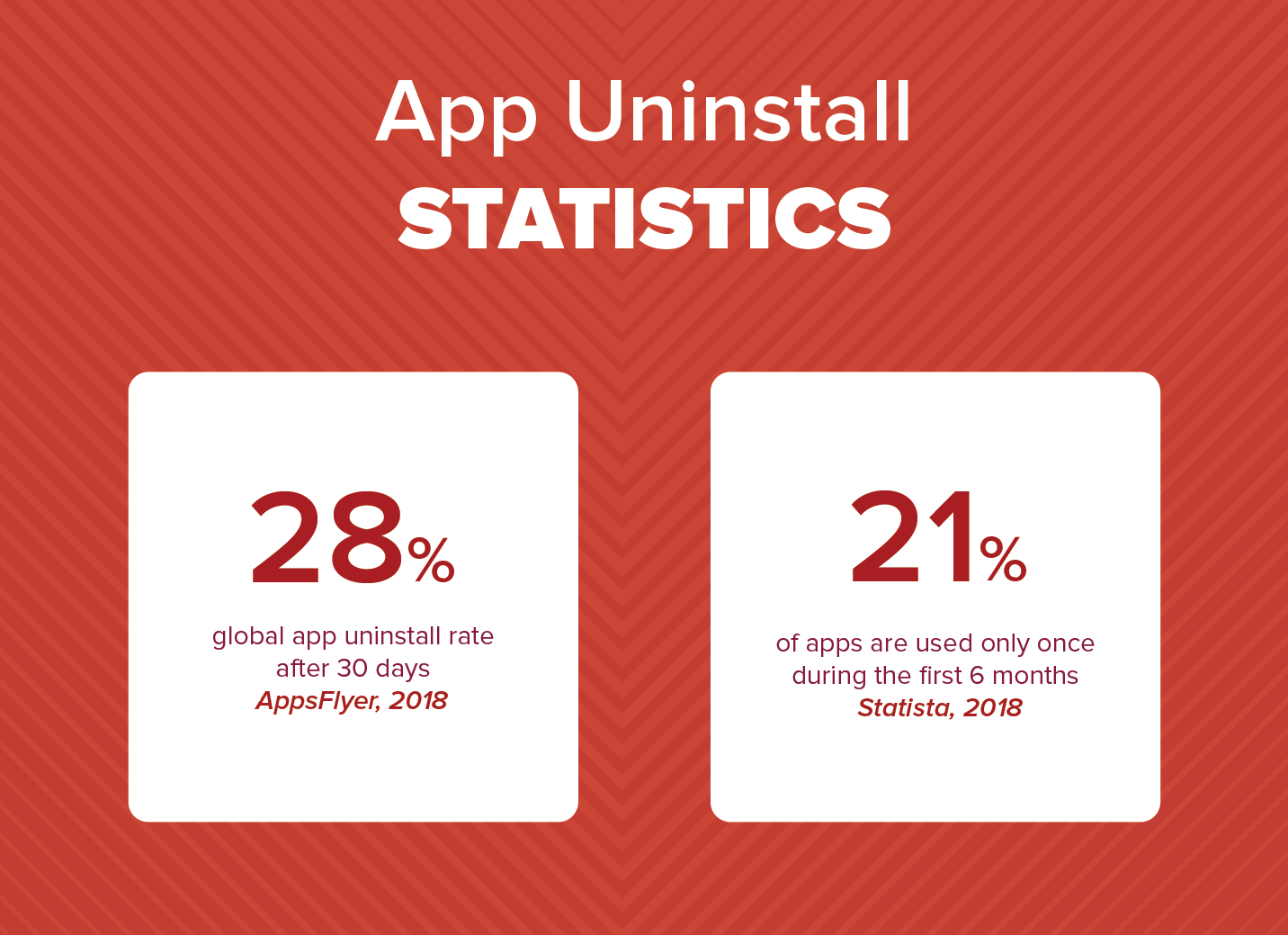
Source: CleverTap
Fortunately, there are things you can do to boost retention. And I’m more than glad to share them with you.
In this article, I’ll discuss (click any link below to go straight to that section):
- What app retention is and why it matters
- What are the ideal app retention benchmarks
- How to measure and make sense of app retention rates
- The time-tested tactics you should implement for an effective mobile app retention campaign
Let’s dive in.
What is app retention?
App retention is your mobile app’s ability to retain the number of active users within specific days, weeks, or months. By monitoring how many users keep or uninstall your mobile app, you can craft the appropriate retention strategies to prevent customer churn, increase user loyalty, and enhance revenue potential.
What’s a good app retention rate?
A good retention rate depends on the platform you’re considering for your mobile app and the type of app you plan to design and develop.
A good app retention rate for the Android platform within a 30-day period is anything above 2.1%, while the iOS benchmark for the same time span is 3.7%. This means if anything between 2 to 4 users out of a hundred are still using your Android or iOS app within 30 days of installing it, you have a fighting chance at succeeding in your app business.
Meanwhile, applications across different industries have an average 30-day retention rate of 5.7%.
Ideal retention rates for various app categories
There are around 9 million apps available worldwide, ranging from productivity tools to gaming apps.
The ideal app retention rate varies depending on your app’s type and industry. Here are the 30-day average retention rates for different industries. If your app surpasses these rates, it shows strong user loyalty.
| App Category / Industry | Average Retention Rate within 30 Days |
|---|---|
| Media & entertainment | 3.8% |
| Social media | 3.9% |
| Retail/e-commerce | 5.6% |
| Travel & lifestyle | 3.6% to 4.5% |
| Productivity | 4.1% |
| Gaming | 5% |
| Education | 2.5% |
| Food & drink | 3.9% |
| Medical | 3.5% |
Our app designers and developers have extensive experience building mobile and web apps for most of these categories. If you have an app idea that could make waves in your industry, book a free consultation with us to explore how far your vision could go.
Measuring and making sense of app retention rates
Retention rates are multifaceted. You have to consider different viewpoints to understand why your app loses or keeps users.
The following concepts are especially useful when calculating and gaining insights from retention rates:
- Engagement
- Churn
- The user journey funnel
- Session length and time spent in-app
Engagement
A high engagement rate means you have a lot of users who remain faithful to using your app for a span of time. There are two basic formulas you can use to determine engagement. They are the basic app retention rate formula and the DAU/MAU ratio.
Basic app retention formula
The fundamental equation for app retention is pretty simple on paper: it involves calculating the percentage of users who remain active in your app over a specified time period. To do this, divide the number of active users at the end of your chosen period by the number of users at the beginning of the period. You then multiply the result by 100 to get a percentage figure instead of a decimal number.
Imagine a scenario where 100 users installed your app today. Now after 1 week, you saw in your mobile app analytics tool that 60 users are still actively using the app. In order to get the retention rate, use the formula below.
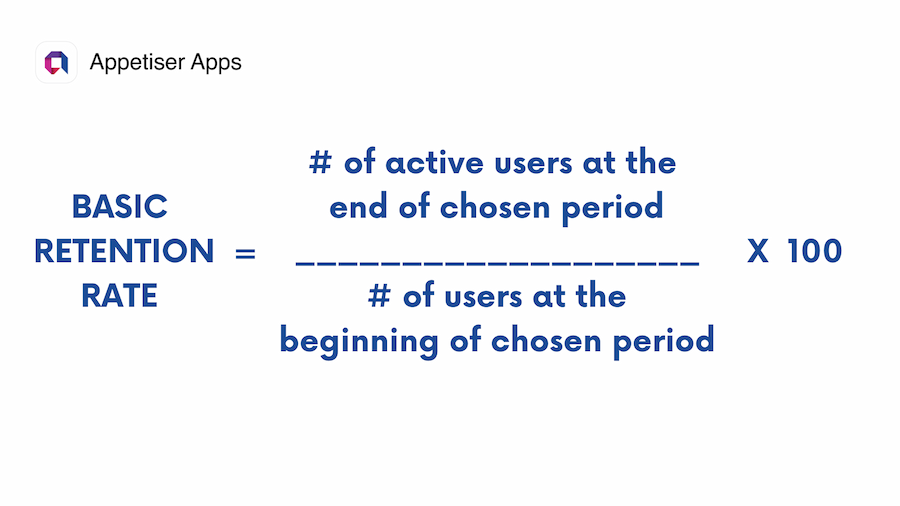
Based on the formula above, here is how your computation will look like:
Basic retention rate = (60 / 100) X 100
From this equation, your retention rate is 60%.
Now what if within 30 days of installation, you saw that only 12 users out of 100 stayed within the app. Here is how you would apply the formula:
Basic retention rate = (12 / 100) X 100
Your basic retention rate for the second scenario is 12%.
But before performing any of the above calculations, you must first:
- Define what is an active user
- Determine the appropriate time frame
Defining active users
Two key factors must be determined to identify active users: the actions you’ll track for activity and the frequency of those actions.
For example, if you’re planning to track the retention of an e-commerce app, you could set a minimum of three product purchases per week for a user to be considered active. If you’re developing a social media app, you could set a requirement of 20 messages per week for a user to be deemed actively using the app.
The chosen actions and their frequency should align with your app’s core purpose and the role it plays in users’ lives, whether as part of a daily routine or for specific needs such as digital bar hopping on MUCUDU or monitoring elderly loved ones on BarbCare.
Determining the appropriate time frame
The time frame over which you will measure retention rates is essential but varies depending on your app and its usage patterns. Monitoring retention rates over 7-, 14-, and 30-day periods gives you meaningful insights into when users tend to drop off.
DAU/MAU ratio
A variation of determining app retention or engagement is the DAU/MAU ratio. DAU stands for Daily Active Users, while MAU represents Monthly Active Users.
The DAU/MAU ratio is simply dividing the number of daily active users by the number of monthly active users and multiplying the result by 100, like in the equation below:
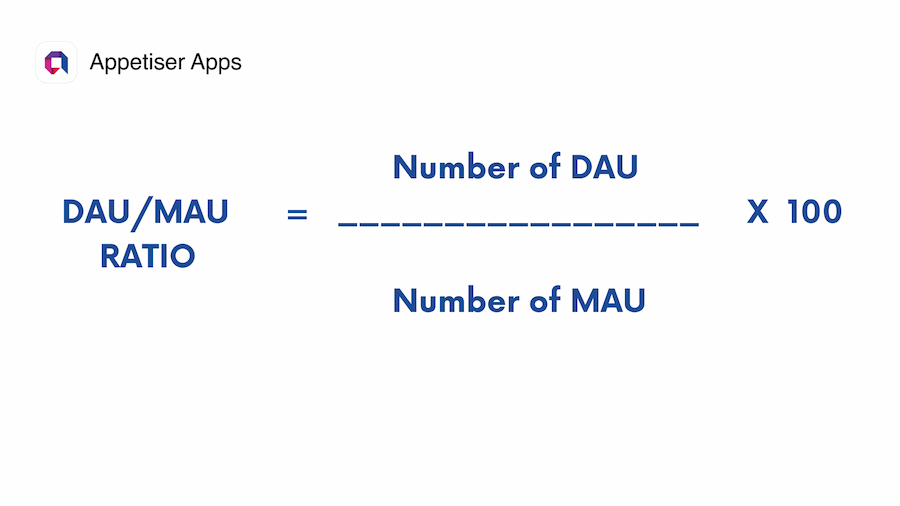
Consider this scenario: Suppose you have 100 Daily Active Users (DAUs) and 200 Monthly Active Users (MAUs) for a specific month. To calculate your DAU/MAU ratio using the formula above, plug in the said values like so:
DAU/MAU Ratio = (100 / 200) X 100
From this calculation, you will determine that 50% is your DAU/MAU ratio.
In simple terms, this figure indicates that 50 percent or half of your monthly users engage with the app daily.
The value of the DAU/MAU ratio lies in its ability to determine your app’s “stickiness.” A consistently high DAU/MAU ratio over many months indicates that enough users are sticking to your app, giving you more opportunities for monetization. The more opportunities for increasing app revenue, the better the chance of turning a profit while having enough funds for app maintenance.
Keeping an eye on this ratio can also give you insights into user behavior and how well your business is doing.
Now that we’ve covered all relevant formulas for engagement, it’s time to see its flipside.
Churn
If high engagement or retention is generally a good sign, high churn is the opposite. The latter indicates that a large number of your users either uninstall or don’t use your app for a given time.
To measure your app’s churn rate, divide the number of lost users by the number of users at the start of a selected period. Then, multiply the outcome by 100 to get the percentage.
To determine the number of lost users, subtract the number of users at the end of a chosen period from the number at the beginning of the same period.
Ultimately, the churn rate formula could take on any of these forms:
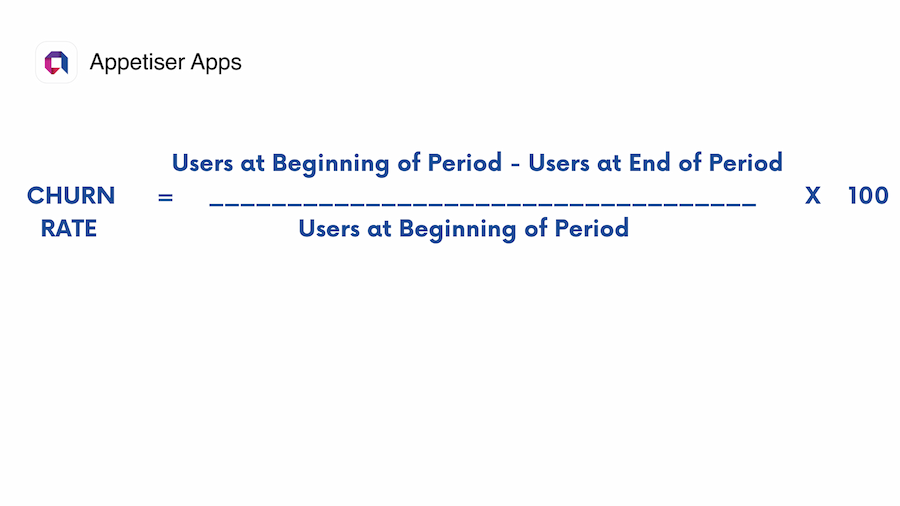

As you may have noticed by now, it is possible to determine retention rates without using the churn rate formula. After all, once you know you have a high retention rate, it is almost automatic you have a low churn rate.
But when pinpointing areas for app improvement, churn rate is valuable, especially when paired with the user journey funnel concept.
The user journey funnel
The churn rate formula considers the time element. For instance, you could measure when users drop off within one week of app installation, or it could be as long as 30 days or 6 months.
Whatever period you use in your churn formula, always remember that time is related to your app’s user journey funnel. As the diagram below shows, the top of the funnel represents the part of the user experience closest to the time of app installation. Generally speaking, the lower you go down the funnel, the more time has passed since the user installed your app.

Source: Business of Apps
Now, how does this diagram relate to churn rate?
If you see a high churn rate within the first week of app installation, your app might need updates to improve its onboarding process. This may mean you should make it easier for users to fill out information or sign up within your app to retain them better.
Now if the high churn rate becomes evident within a few months of installation (eg, you use a longer period in your retention formula), the problem may more likely be with the features of your app instead of the onboarding process.
For instance, a high churn rate that suddenly emerges around 6 months after installation could indicate that users easily get bored with your features or that you haven’t maintained your app’s performance to acceptable levels.
But remember, the relationship between time and the user journey funnel is not a hard-and-fast rule. The connection between the period you consider in your churn rate formula and the funnel is more of an indicator of which aspects of your app’s user experience you could look at to improve your retention rates.
Session length and time spent in-app
Session length and time spent in-app are closely connected to both engagement and churn rates.
Session length refers to the duration users spend within an app each time they access it, while time spent in-app encompasses the total duration a user engages with the app.
There is debate on how these metrics help in figuring out app retention. For instance, just because users frequently open an app and spend a lot of time on it doesn’t mean they’ll stick around for long. If users are spending hours in an app struggling with a confusing process, the app doesn’t bring lasting value and could make them leave.
Thus, while session length and time per session are essential metrics, they may not always signify positive engagement or ensure long-term retention. These two measurements must be used in the context of other engagement and churn metrics.
Now that I’ve discussed the formulas and insights behind app retention, I’d like to share some actionable tips for bolstering mobile app retention rates.
8 Tried-and-Proven Mobile App Retention Tactics to Inspire Your Next Campaign
#1 Choose the right mobile analytics tool
One of the cornerstones of a successful mobile app retention strategy is using the right mobile analytics tools. These tools gather and analyze data from a mobile app to understand user behavior and engagement more effectively.
Some of these solutions are good at helping you optimize various stages of the user journey, while others excel at tracking the features your users interact with the most. For more information on these and other related tools, check out our mobile analytics playbook for app success.
One company that was able to choose a good mobile analytics tool is CricHeroes, a large cricket network with 17 million users. The business aimed to improve app engagement and retention. But since they lacked insights into user behavior, they leveraged the behavior analytics tool Smartlook. Through this analytics software, CricHeroes was able to refine onboarding processes, remove unnecessary features, and encourage behaviors leading to higher engagement.
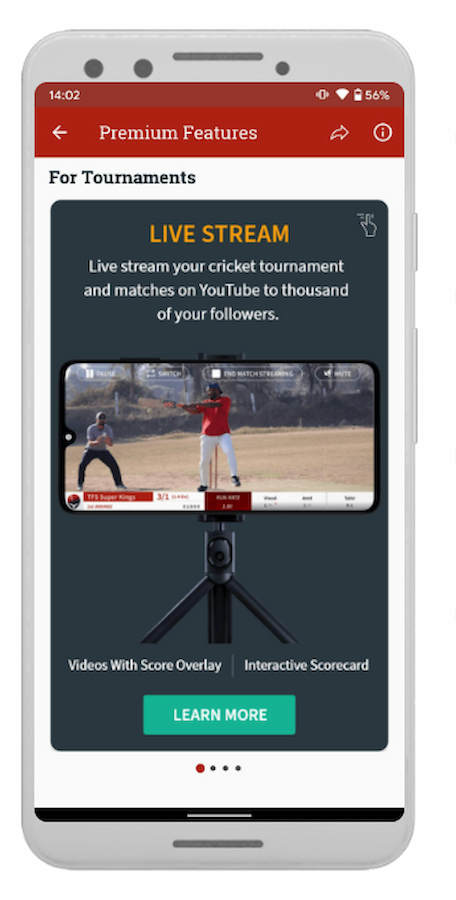
Source: CricHeroes
#2 Smash user onboarding
Onboarding can make or break your app. It is your single most crucial opportunity to make a first and lasting impression on your users.
Poor onboarding experience leads to low user engagement and high churn rates. On the other hand, successful onboarding drives user engagement, retention, and loyalty.
This is something that MyFitnessPal, a weight loss and fitness app, has got right.

Source: CleverTap
MyFitnessPal starts the onboarding process by asking its users to log the food they have eaten. Afterward, it automatically shows the users’ calorie intake, encouraging them to further interact with the mobile app.
From the start and with just a single step, MyFitnessPal met several crucial aspects of user onboarding. It communicated the app’s value, provided a personalized experience, and drove user engagement.
Our takeaway? Simple, on-point, and interactive onboarding can spell the difference between user retention and churn.
Here are other things to remember to craft a smashing onboarding experience:
- Keep the sign-up process short. Mobile users don’t like filling out numerous fields. If possible, allow single-step registration using existing social media profiles or simply allow guest users.
- Make tutorials engaging. Users tend to lose focus quickly. Consider using interactive walkthroughs, video tutorials, or games to keep users engaged.
- Cap the onboarding with a killer call-to-action. This will prompt users to take the next step. Be proactive in driving constant mobile app engagement to retain users.
#3 Personalize user experiences
Users reward mobile apps that get personalization right. According to a study by McKinsey, 76% of consumers are more likely to patronize brands that treat them as individuals and demonstrate knowledge of their interests.
They are also more likely to recommend brands that offer a personalized experience to friends and family.
On the flip side, mobile apps that do not offer relevant experiences are likely to frustrate and lose their users.

Source: McKinsey & Company
#4 Use push notifications wisely
Mobile users have a love-hate relationship with push notifications. Despite having a 90% open rate, push notifications are responsible for driving 71% of app uninstalls. But when used wisely, push notifications can be among your most powerful app retention arsenals.
But how do you make push notifications work to your advantage?
Let’s take inspiration from what the dating app Tinder did right in this example:
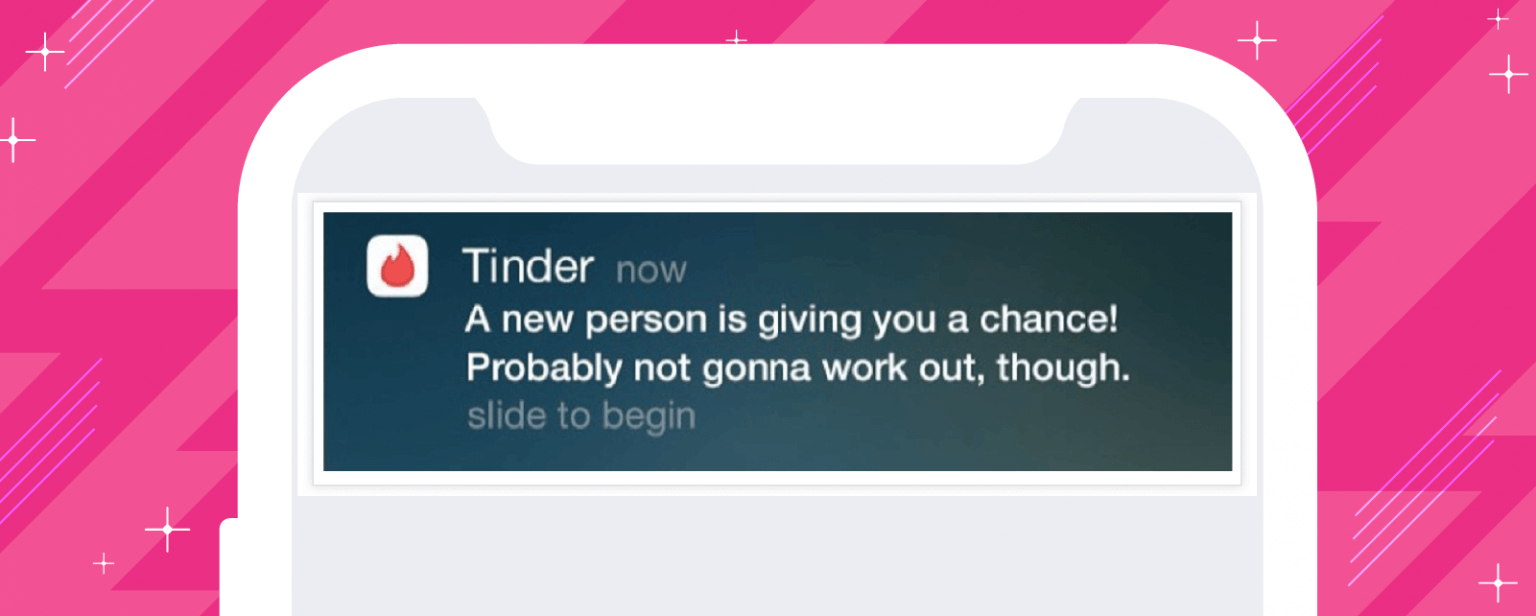
Source: CleverTap
Of course, not all apps can get away with such a snarky copy. But since it’s from Tinder, it makes a good case in point for this crucial insight:
Effective use of push notifications starts with knowing your target users.
With the highest percentage of its users belonging to the 18 to 24 age bracket, Tinder wisely used humor to catch the attention of its young and adventurous market. It also did an excellent job of crafting a message that sparks one’s curiosity, which is an effective way to prompt users to take action.
When you have enough insights about your new and existing users, it’s easier to design timely and relevant campaigns that can dramatically increase your app retention rates.
Here are other best practices to consider as you navigate the tricky push notification waters:
- Think out of the box. You have a small window and a few characters to play on to lure users into opening your message. Be creative and find ways to maximize what you have.
- Take the user journey into account. Know where your target users are in their journey. Send push notifications to optimize their app experience and guide them to take the next steps.
- Offer something valuable. Be it a piece of relevant information, a reward, or a discount, users often respond positively when they get something.
#5 Implement in-app messaging intelligently
For users, in-app messages can either be annoying or helpful. You have to make sure it’s the latter.
When implemented properly, in-app messaging enables you to keep users interested by informing them of new features, tips for using old features, value-rich promos, and other useful bits of information.
Check out our article on in-app messaging for increasing customer retention to delve deeper into this topic.
In addition to being rich in valuable content, effective in-app messages must also be timed perfectly and targeted according to user behavior and preferences. For example, if you have an e-commerce app, you could send promo messages for an umbrella on sale to a person who bought rain gear from your app in the past.
One company that has implemented in-app messaging well is Shake Shack. The food ordering business deployed in-app messages to introduce a time-limited Superbowl offer, prompting users to take action with an “order now” button. Through this campaign, the Shake Shack app got 37,000 impressions and an impressive 20% click-through rate, demonstrating the power of strategic messaging in engaging and retaining app users.
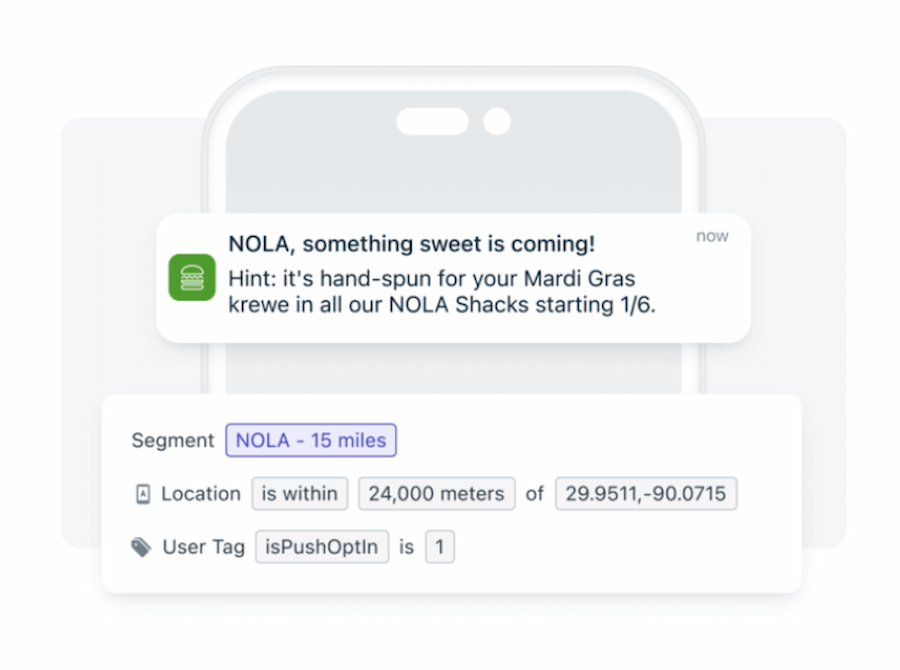
Source: OneSignal
#6 Spice things up through gamification
As of 2021, the global gamification market size was valued at $10.5 billion. Industry analysts expect it to grow exponentially and reach $96.8 billion by 2030.
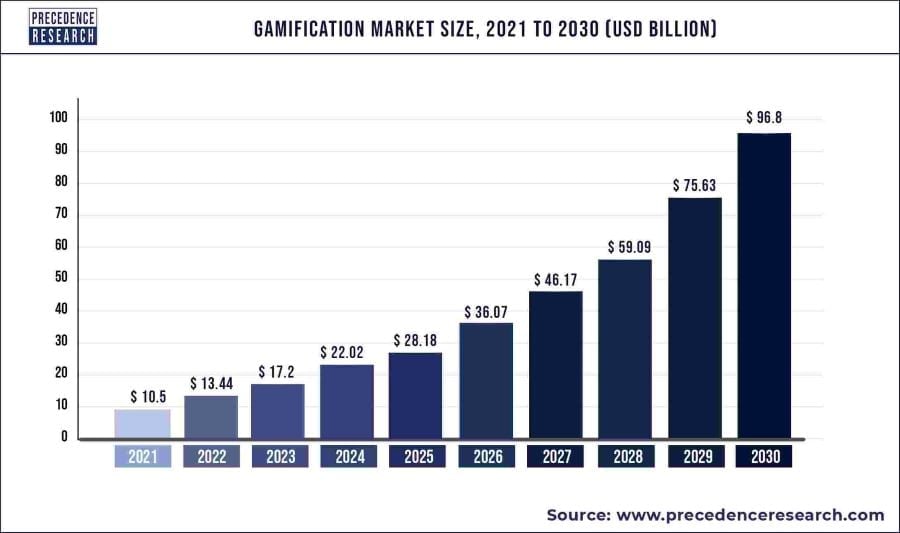
Source: Precedence Research
What do these figures indicate? Simply put, gamification works. And the best part is you don’t have to own a gaming app to capitalize on this reality.
Take, for example, what the task management app Todoist did to increase app retention.
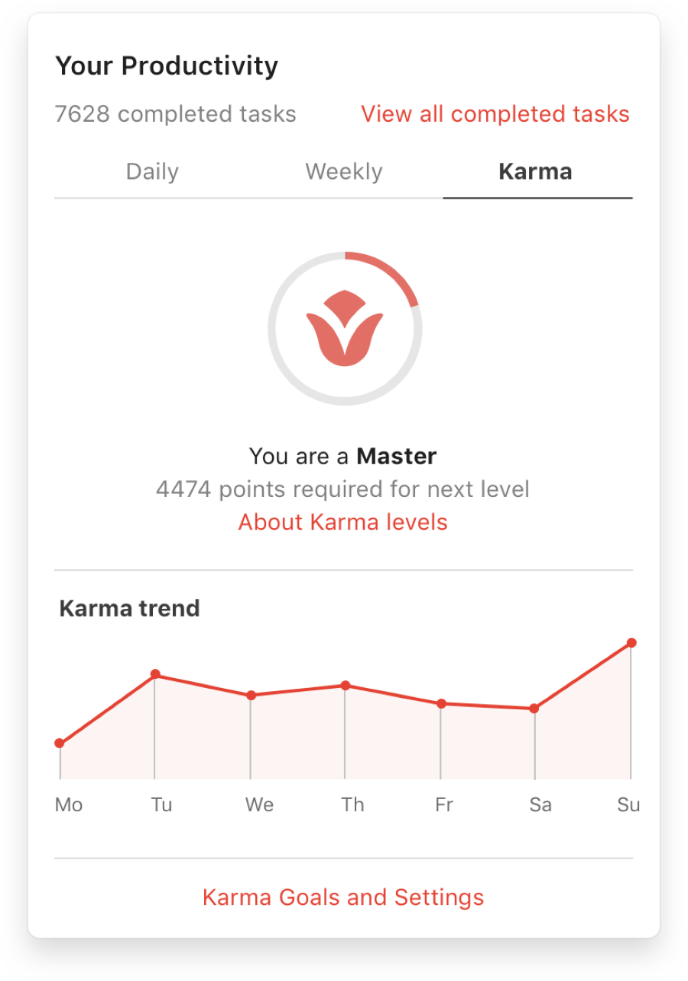
Source: Todoist
Todoist created a point-based reward system. Every task completed by its mobile users has equivalent karma points. Likewise, every task missed has equivalent negative karma points.
To drive continuous user engagement, the mobile app also created levels that users can unlock when they reach a certain number of karma points.
Todoist pulled off a smart retention strategy by capitalizing on people’s competitive nature and desire for a sense of accomplishment. This is something that you can replicate as you draw your mobile app retention strategies.
To further motivate more users to interact with your app, keep the following gamification tips in mind:
- Incentivize users. Everyone loves freebies. Keep active users excited by offering tokens and other forms of rewards.
- Use leaderboards and badges. This can fuel your users’ competitive side and promote habitual app usage.
- Enable cross-platform sharing. People love to share their accomplishments. Allow your mobile users to seamlessly share their progress on Facebook, Instagram, and other channels.
#7 Keep email marketing on point
Despite the advent of social media and other communication platforms, email marketing remains the most efficient and cost-effective app engagement and retention tool.
According to Statista, the number of global e-mail users continues to grow and is estimated to reach 4.6 billion by 2025.
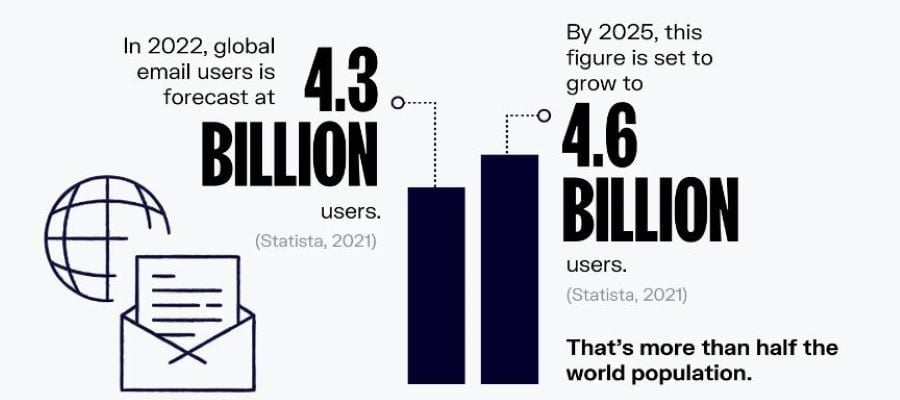
Source: Oberlo
But with so many things fighting for mobile app users’ time and attention, getting emails opened, let alone read, remains a challenge for most app marketers.
How do you make yours stand out in your users’ inboxes?
Perhaps, you can learn a thing or two from Uber.

Source: Nexcess
In the example above, Uber communicates that it knows and understands its mobile app users — and does so cleverly. That’s one point for personalization and another for grabbing the audience’s attention.
The message was also bookended with clear call-to-actions, giving Uber another point for promoting continuous mobile app engagement.
When used appropriately, email marketing can complement any app retention strategy. You can use emails to thank valuable users, promote referral programs, retarget inactive users, and accomplish many other mobile app engagement initiatives. However, you must learn how to find email addresses of the people you want to target to ensure your messages reach the right audience.
To make your email marketing campaign even more effective in boosting app retention, consider the following tips:
- Use attention-grabbing subject lines. Email subject lines are the first things users see. Make it irresistible.
- Address users by name. This boosts email open rates by as much as 35%!
- Keep readability in mind. Reading your email should be as effortless as possible for your audience. Write short paragraphs and leave white space in between to avoid straining your readers’ eyes.
Want more powerful app marketing tips? Check out this article written by our CEO and director, Michael MacRae.
#8 Conduct surveys
Surveys are one of the most effective ways to gauge the pulse of your app’s users. These feedback tools can help you determine why users are staying or dropping off.
You can send surveys through email, in-app messages, social media posts, and other digital channels.
To ensure your surveys get the feedback you need for effective app retention, make sure that they:
- Are not disruptive to the user experience
- Have open-ended questions to get as much information as possible from app users
- Contain clear, specific, and easy questions
- Are sent to the right individuals, in the right context (much like targeted in-app messages)
- Undergo constant improvement and testing
One brand that has gotten user survey right is the productivity tool Slack.
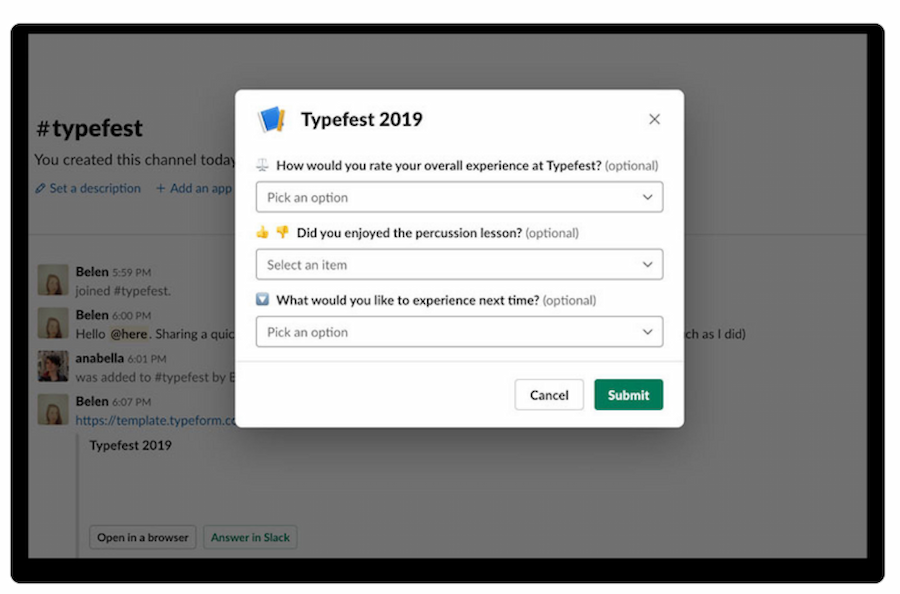
Source: Qualaroo
Its survey only has one page with three short questions to collect qualitative and quantitative feedback. The questionnaire also has an open-ended question as well.
Loyal users are made, not found
If you’re simply waiting for users to interact organically with your app, you’re putting your app retention rate and profitability on the line.
Remember, user loyalty is earned — and this is something you need to do constantly and consistently. With so many options available at their disposal, even your most loyal daily active users can be gone in a snap.
You must stay proactive in keeping your users engaged and promote mobile app usage at every stage of the user journey. This is the key to a successful app retention strategy.
Don’t let fear hold you back.
If you’re a new app developer, we hope that these insights will help you move forward with your goal.
Yes! Risks exist. We’re not gonna sugarcoat that fact. But there is an effective way to mitigate them: by starting lean.
Hear us out.
At Appetiser Apps, we always start with a minimum viable product. When you partner with us, you get a world-class app design that’s ready for programming — at a fraction of the cost of development.
You can use the fully clickable and interactive design to gain valuable user feedback or secure funding from investors. We’ve had partners who have successfully done this, raising more than a million dollars through crowdfunding.
Want to read their inspiring stories? Click on these links:
- Good Empire: Nine Years to Save the World
- Vello: From Footy Legend to Founder Connecting Millions of Fans With Their Idols
If you like what you’ve read, hit us up! Together, let’s work on turning your vision into an awesome reality.



